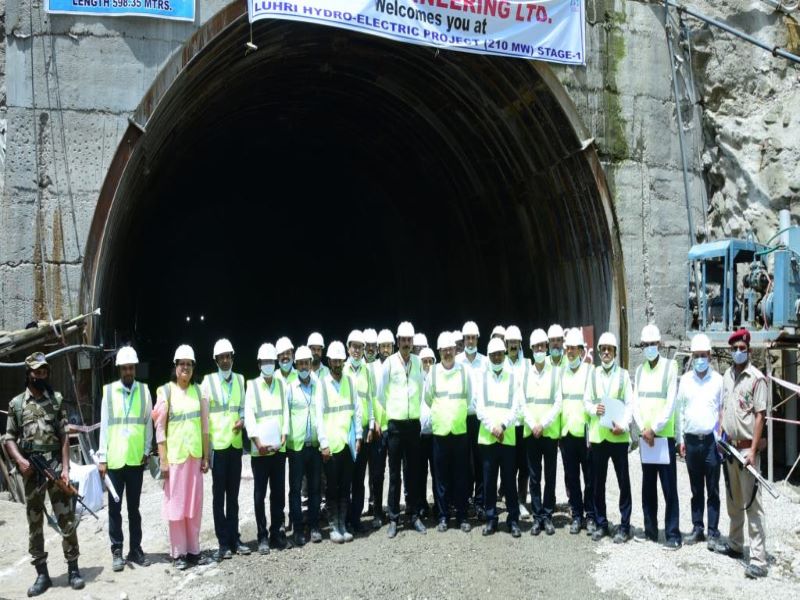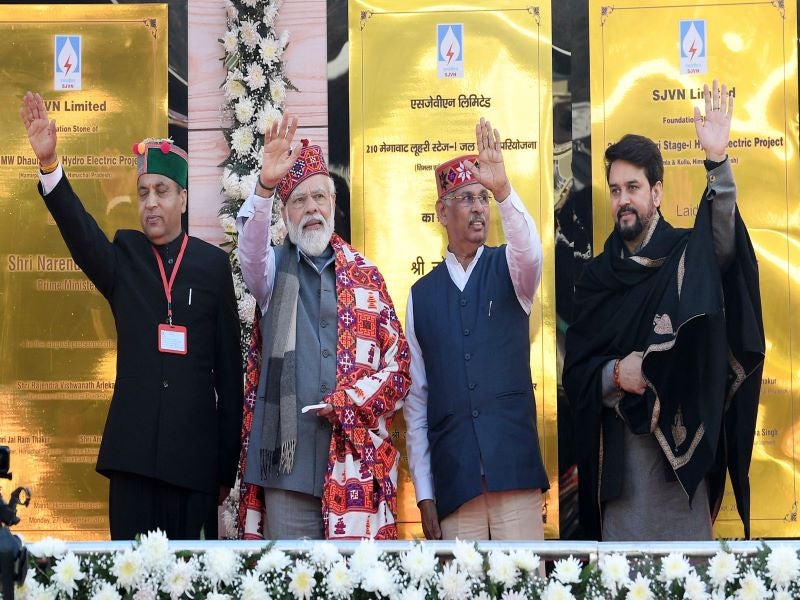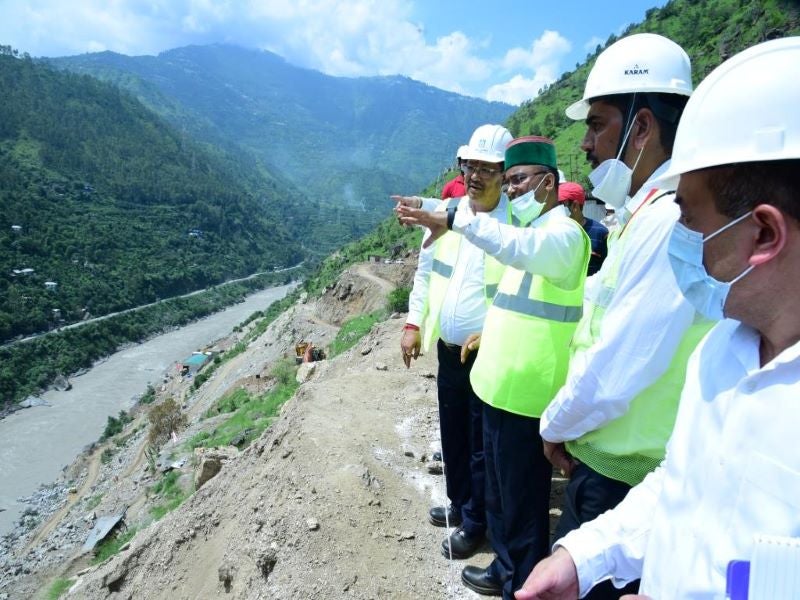The Luhri Stage-I hydroelectric project is a 210MW run-of-the-river hydropower project being developed by Satluj Jal Vidyut Nigam (SJVN), a joint venture between the governments of India and Himachal Pradesh state.
It is part of the Luhri hydroelectric project (HEP), which is being implemented in three stages on the Satluj River, in the north Indian state of Himachal Pradesh. The remaining two stages include the 172MW Luhri Stage-II and 382MW Sunni Dam HEP.
Luhri Stage-I is expected to generate up to 758.2 million units of electricity a year, at a levelised tariff of $0.05 (Rs4.24) per unit.
It is estimated to provide free power worth approximately Rs11.4bn ($153m) to Himachal Pradesh during its 40-year life cycle. The families affected by the construction of the project will receive 100 units of free power monthly for ten years.
The foundation stone for the project was laid by the prevailing Prime Minister of India, Narendra Modi, in December 2021. Commissioning of the power plant is expected by April 2026.
The investment required for the Luhri Stage-I project was estimated at $253.7m. The project is expected to generate about 2,000 direct and indirect jobs during the construction phase.
Project location
The Luhri Stage-I hydroelectric project is being developed on the Satluj river, near the village of Nirath, in the Shimla and Kullu districts of Himachal Pradesh.
The site is accessible from the national highway (NH) 05.
Luhri Stage-I development background
SJVN and the Government of Himachal Pradesh signed an agreement to execute the project in October 2008. The Government of India approved the investment to undertake pre-construction activities in February 2018.
The project received environmental clearance from the Ministry of Environment, Forest and Climate Change (MoEFCC) in March 2020.
Dam and reservoir details
Luhri Stage-I includes the construction of an 80m-high concrete gravity dam, which will stand 49m tall above the riverbed. It will create a 6km-long reservoir that will occupy 100.23ha.
The upper-level spillway of the dam will be ogee type, featuring open crest overflow with a single flap gate, while the lower-level spillway will be sluice type, with six radial gates.
Luhri Stage-I plant make-up
The powerhouse will be built on the surface, at the dam toe, on the right side of the riverbank. It will comprise two main power units of 80MW capacity each and two 25MW auxiliary power units. All four units of the plant will be equipped with Kaplan turbines and generators.
The main units will receive the water flow through two 6.8m-diameter penstocks measuring 84.14m and 80.48m in length. The penstocks for the two auxiliary units will have a diameter of 4m and measure 95.86m and 99.82m long.
The main and auxiliary power units will have two separate intake structures, each with fixed wheel type intake gates. The main intake will be semi-circular shaped, with inclined trash racks, while the auxiliary intake will be a straight one, with vertical trash racks.
The tailrace system will comprise a 90m-long, upward sloping, concrete-lined channel, downstream of the powerhouse, along with another 30m-long and 45m-wide channel to release water back into the Satluj River.
Financing
The Cabinet Committee on Economic Affairs (CCEA) of the Government of India approved an investment proposal of Rs18.1bn ($242.9m) for the project in November 2020. The Government of India also provided grants worth Rs661.9m ($8.8m) to fund the enabling infrastructure for the project.
The project achieved financial closure in March 2022. The State Bank of India reached a loan agreement for Rs15.37bn ($202.93m).
Contractors involved
Global industrial equipment supplier Voith Hydro was contracted for electro-mechanical works for the project in August 2021.
The contract for the civil and hydro-mechanical works was awarded to Luhri Hydro Power Consortium, comprising Patel Engineering and HES Infra, in the same month. The scope of the five-year contract includes design and engineering services, in addition to civil and hydro-mechanical works.






